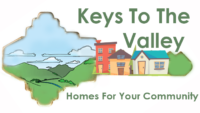Improving access to emergency housing begins with supporting providers in maintaining, communicating, and expanding their services. There are significant numbers of residents in the region who have difficulty finding a home. The demand for emergency housing is increasing significantly in 2020 and 2021, in part, as a result to the pandemic.
Access to safe housing for people experiencing sudden or chronic homelessness is essential to ensuring the health and dignity of people living in the greater Upper Valley region. While this need may be most visible in the region’s urban centers, it is also felt in rural and suburban communities. Racial and ethnic minorities experience homelessness at a disproportionately higher rate.
Emergency housing protects adults, families, and children in their general health, from exposure to inclement weather, and from unsafe social situations. Emergency housing can also help connect people to other essential services, such as those for substance misuse and mental health issues, and end chronic homelessness through Housing First programs. These programs help to end homelessness by connecting individuals and families to homes with supportive services. By providing more emergency shelters with needed services, access to those shelters in the smaller and larger communities, and educating the public about the needs and options for emergency housing, then communities can better ensure the safety of all those who live in the greater Upper Valley region.
Additional Resources:
- The State of Homelessness in New Hampshire Annual Report 2020 by New Hampshire Coalition to End Homelessness
- Homelessness in the Upper Valley by Hartford Ad Hoc Committee on Homelessness
- Housing First 2019 Fact Sheet by Pathways Vermont
- Keys to the Valley Toolbox Strategy Better Understand the unsheltered population (part of Action Area A – Spread knowledge of the region’s housing needs)
- Keys to the Valley Report on Emergency Housing and Homes with Supportive Services

